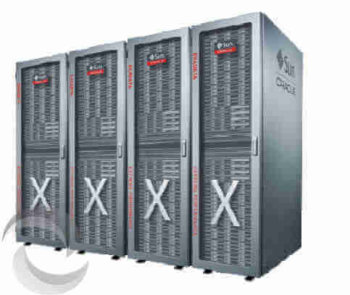The Evolution of Oracle Exadata Engineered System
The demand for storage and data processing have changed considerably over the years. Earlier servers were meant to store and exchange data and that was the end of it.
But the Needs have Changed!
The modern day business deals with huge amount of structured data along with unstructured data arising out of all verticals. It is not sufficient to just store them, but to use them for better insights and applications.
Today, data-intensive workloads and important processes like analytics need to churn large volumes of data to identify the important aspects. Enterprises need to run applications which involve machine learning or develop projects using AI.
Enterprises need improved computing capabilities along with traditional storage- something which has changed the roles of the server.
With the coming of cloud computing the role transformed further and now we have several key players in the industry fighting it out in the storage and cloud service industry.
Oracle Exadata Engineered System: A Late but Capable Entry
Oracle has been late in entering the cloud server market but had placed itself behind the industry leaders like Amazon Web Services and Microsoft Corp. The company recently dissatisfied its investors by failing to meet the predicted sales amount but still they recorded a gain of 44% to make $1.52 billion.
Through the years we have seen Oracle’s products getting better and better with improved performance and benefits. One bright example among them is the Exadata Engineered System lineup of servers designed specifically for the modern needs of business. The range of servers was introduced in the market in 2008 and has gone through a steady process of evolution through the last 10 years.
The current range of products delivers powerful computing and storage functions for enterprises that need to run HPC workloads, data-intensive processes, database workloads, and other mission-critical applications. It is also the perfect tool to run an Oracle database.
Let’s take a look at one of the most recent products that was released by Oracle:
Exadata X7 Engineered System
New and Improved Hardware
The Exadata X7 engineered system is a new addition to the Oracle Cloud Infrastructure and is powered by the X7 hardware. The infrastructure utilizes the “Skylake,” 14 nanometer Xeon SP chips from Intel and integrates Nvidia’s Tesla P100 accelerators made out of “Pascal” architecture of the GPU maker to run the accelerated bare metal shapes.
One standard rack of the Exadata X7 can be scaled up to 28.5 TB memory and 912 CPU cores while the raw disk capacity can be taken up to 2.1 PB. Using the Hybrid Columnar Compression tool of Oracle, data can be compressed up to 15 times. It also offers the fastest form of disk storage which can utilize 720 TB of NVMe storage.
The X7 has also improved on the networking aspect and the standard 10 GB/sec network interface has been increased to dual 25 GB/sec. Furthermore, the system is equipped with a 40 Gbps InfiniBand network which delivers high bandwidth while reducing latency. The bare metal instance runs on 28 cores offering over 18 TFLOPs of single precision performance.
The Exadata X7-2 is designed to offer superior performance and reduce costs at the same time. The innovative cloud-based infrastructure comes with scale-out storage server and database server capabilities. Oracle also uses two configurations of storage servers- Extreme Flash and High Capacity. Extreme Flash storage servers are equipped with 8 PCI Flash drives with storage capacity of 6.4 TB each. The High Capacity storage servers come with 4 NVMe PCI Flash cards with storage limit of 6.4 TB and 12 x 10 TB 7,200 RPM disks.
The 3 storage servers and 2 database servers available in the starting configuration of Exadata systems can be easily scaled by adding additional servers as needed. The InfiniBand fabric can be used to expand configurations by setting up multiple racks.
The Exadata comes withl all necessary hardware and can be deployed very easily. Oracle experts tested, configured, and tuned the database and storage servers so that enterprises don’t need to spend months trying to deploy it. All components including database, OS, software, drivers, and firmware work coherently and simultaneously so that there are no performance bottlenecks.
Improved Computing
The upgraded configuration and hardware innovations have put Oracle in the race with other names like IBM and Dell EMC. Now enterprises can run modern workloads and develop intensive applications in less time and cost.
The Exadata benefits can be availed through Oracle cloud or installed on the premises. It is going to benefit the SMEs majorly who can use the technologies in their own environment, avoiding the expense of purchasing an on-premise solution.
Along with hardware, Oracle has also made software improvements which have brought in many new possibilities. Deep learning applications will now be easy to create and deploy using the Artificial Intelligence service embedded in the system. The architecture will also include the Oracle Blockchain Cloud service which will help in the development of AI applications.
With these improvements, Oracle has been able to provide high performance computing (HPC) capabilities to enterprises, bringing them from the exclusive circle of education and research institutes.
The Future of Oracle Exadata
Oracle is not stopping here when it comes to innovation and taking their products to another level. Businesses will need more powerful technology as we move through the digital age and deal with ever increasing amounts of data.
Next year they are supposed to bring out bare metal instances and VM driven by 8 Nvidia’s V100 GPUs making use of the “Volta” architecture. The system will also integrate the NVLink interconnect technology from Nvidia and together it will churn over 125 TFLOPs of per instance single precision performance. Pre-configured images will be offered, which will allow for faster deployments.
Oracle can move up with their Exadata series and experts are keeping an eye to find out how they evolve.





